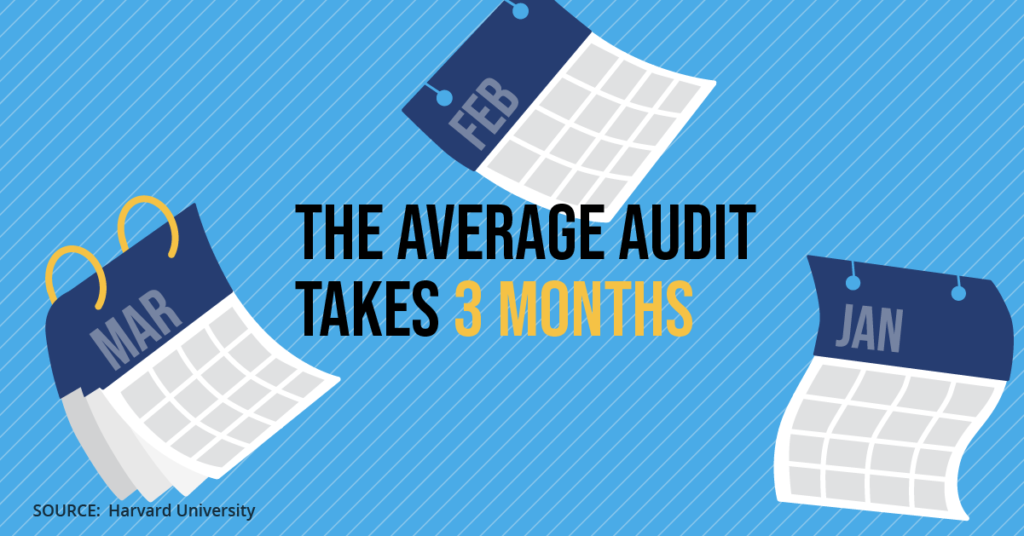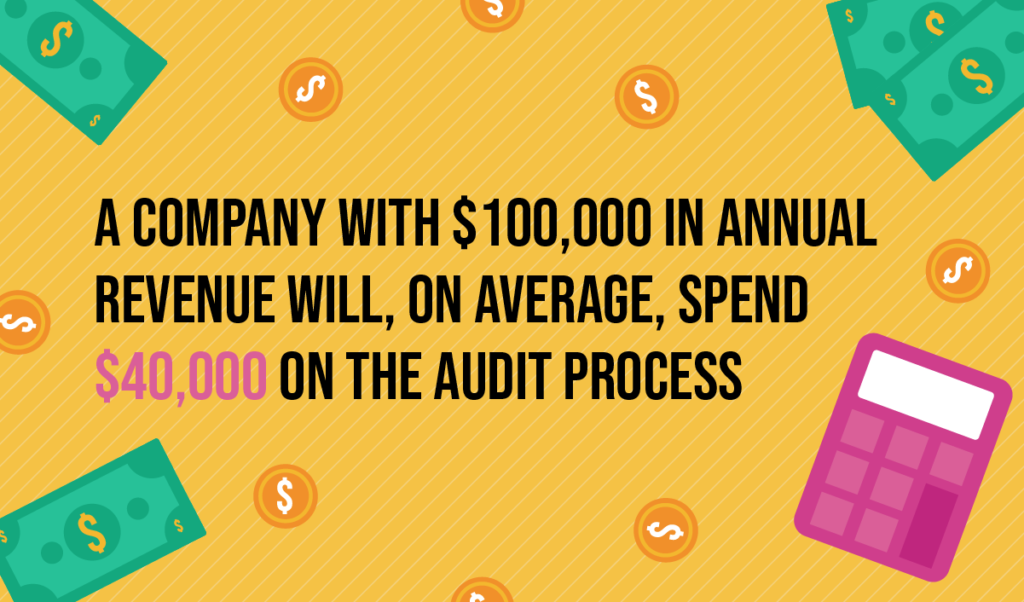Here’s One Thing That Can Make the Audit Process Easier

In Greek mythology, as punishment for tricking Zeus, Sisyphus was forced to roll a massive boulder up a hill for all of eternity. Every time he got to the top, he was forced to start over at the bottom.
The audit process, well, it can feel a bit Sisyphean.
It’s a never-ending cycle, and once you finally finish an audit, there’s a good chance another one is looming just around the corner.
Audits do serve their purpose, of course.
They help ensure records are accurate, improve performance, and establish trust with the public. For many publicly run, tax-exempt, or government contract companies, they might even be legally required.
Audits can also identify discrepancies in your financials and although we sometimes turn a blind-eye, audits also uncover fraud. On the other hand, without workflow automation technologies, audits can be tedious.
But they don’t have to be.
Why is the Audit Process So Incredibly Time Consuming?
The audit process is critical to business success. It can help improve product quality, productivity, and help your firm discover opportunities for improvement.
But, it is also incredibly time-consuming.
Internal audits are performed regularly which are typically announced, and the occasional surprise audit should be utilized as well. When it comes to an auditing service, the average audit takes three months, including planning, fieldwork, and compiling the actual audit report.

The wide range of tasks required contributes to the length of the audit process, which can include:
- Creating a plan for the audit
- Delegating tasks
- Reviewing assets and reports
- Ensuring records match
- Investigating why records don’t match
Other contributing factors include miscommunication, lack of access to data such as view-only credentials, missing documents, or follow-up questions. This communication takes time and may require additional research — which can all be incredibly time-consuming, particularly if those messages get buried in email inboxes.
The audit process for organizations is necessary, but it doesn’t have to be painful. In fact, there is one tool that can streamline the audit process and make it nearly pain-free — and more accurate.
Here’s How Workflow Automation Can Help Streamline the Audit Process
Workflow automation tools use pre-set rules to automate manual tasks, like data entry or sending email reminders — and they can be the key to more accurate and time-efficient audits.
Here’s why that matters — whether your company hires an outside firm or uses internal staff, you’re paying for the audit.
Most external audit firms bill hourly. Therefore, time spent tracking down your employees, digging for documents, or asking clarifying questions costs you money.

Even if you have an internal audit and compliance department, communication lags still cost money. Your internal audit department likely does far more than just audits — they might also review compliance, ensure safeguards are in place, and analyze operations as a whole.
When your audit or compliance department spends unnecessary time on audits, they have less time to focus on more critical tasks that could save your firm money.
So how do workflow automation tools prevent your company from wasting needless time and resources on the audit process?
Auditable Communications and Workflow Actions
One of the most time-consuming tasks in the audit process is communication. Where is this report? Why don’t these numbers match? Where is the source data for that report?
Here’s the thing — emails get buried in overflowing inboxes. And, despite our best efforts, sometimes deadlines get missed. Those missed deadlines then require an email reminder, which you also have to remember to send and follow up on.
Sometimes, multiple people need to be a part of a conversation, but only get added to the email thread halfway into the conversation.
Workflow automation tools centralize conversations into one place, (usually on each specific document or invoice) making it easier to get a complete understanding of a situation.
With Stampli, all communications are recorded. In addition, every invoice field change is logged in to the center communication feed. Moreover, pre-set rules allow you to require additional approver or authorization before the invoice can be processed.
Then when there’s an audit-related question, the auditor can easily access the specific invoice under scrutiny. With invoice workflow automation like Stampli, audits can be easily conducted as all communications in addition to invoice changes made and approvals are made available in the center feed.
By having the entire story stamped onto the invoice itself, auditors have all the information they need. Which is far faster than piecing the story together in multiple emails
Improve Accessibility to Documents
Quick, what did you have for lunch on April 23rd, 2019? Unless you have an autobiographical memory or a darn good day planner, you likely have no idea.
When it comes to audits, you likely won’t have to remember lunch, but you might need to know why a specific action was taken, which requires documentation.
If your documentation is not efficiently stored or organized, your audit becomes far more stressful. Worse, properly stored documents may leave you at risk of being non-compliant, which could leave you at risk of financial penalties.
Instead of shuffling through file cabinets, desk drawers, and email inboxes, your workflow automation software can provide fast, secure access to documents — all in one central location. For example, Stampli’s AP workflow automation software provides audit-ready access through the Advanced Search tool.
The Advanced Search tool allows both internal and external auditors (through View Only permission) the ability to search invoices and can easily locate GL codes, any changes made to the invoice, and communications that led to the final decision on any invoice. In fact, audit prep time can be nearly eliminated when all documents are stored and easily searchable.
Automate Reporting
Auditors often require access to a variety of reports and financial data, including payroll, financial statements, invoices, POs, and more. Automated reporting allows the audit team to locate the reports they need and search for anomalies easily.
You (or the audit team) will no longer have to waste valuable time pulling reports and making sure they get into the right hands with the right access.
Automated reporting can also create easy to follow audit trails that allow both users and auditors to compare data, see who made changes, and when those changes were made.
Quickly Update Procedures to Comply With Changes in Regulation
SEC and industry regulations are constantly changing, and your firm needs to stay on top of those changes to remain compliant. Your firm needs to be able to comply with these changes quickly and without unnecessary hassle. An effective workflow automation tool will allow your organization to update your procedures quickly so you remain compliant.
Improve Productivity Outside of the Audit
Streamlining the audit process with workflow automation can do more than improve the audit process, it can also make your firm more competitive as a whole. Instead of spending valuable time hunting down documentation for the audit, for example, your employees can continue to focus on revenue-generating tasks.
Final Thoughts
Workflow automation software is no substitute for professional judgment. However, a properly designed and implemented workflow can reduce the time and financial burden of audits so your company can get back to doing what you do best — serving your customers.